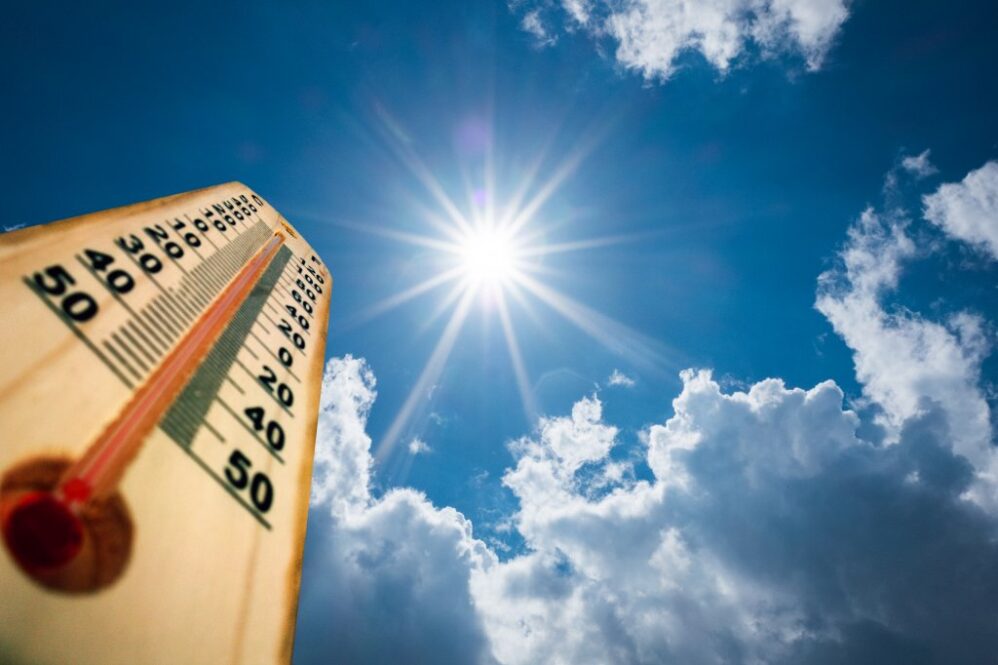Maryland Matters: A video of a UPS driver collapsing on the job in Arizona went viral last month. After a brief pause, the employee rises and goes back to work.
Millions of workers are toiling under similar conditions as heat waves ravage the country this summer.
In Maryland, backers of legislation to protect workers against heat stress are frustrated by what they call the Hogan administration’s “lack of urgency” and transparency in creating regulations to implement the bill, nearly two years after it became law.
The recent heat wave highlights the importance of heat regulations as the Maryland Department of Labor continues work on carrying out House Bill 722, which passed the General Assembly in 2020.
The commissioner of labor and industry at the Department of Labor, Matthew Helminiak, said the agency is looking to complete draft regulations in the “next couple of weeks.”
Public awareness of the increasing number of heat-related illnesses has grown as industries throughout the world grapple with the impacts of climate change. House Bill 722 was designed to mitigate the effects climate change is having on state residents, said Del. Lorig Charkoudian (D-Montgomery), lead House sponsor of the legislation.
“I’m really looking at the heartbreaking reality that we have a warming planet,” Charkoudian said in an interview. “And while we’re trying to slow the warming down, we need to make sure that we’re caring for everybody.”
A group of labor and health professionals wrote a letter to Helminiak and Maryland Secretary of Labor Tiffany Robinson in support of heat-stress regulations back in November. “As heat-related worker deaths are linked to unusually hot temperatures, workers exposed to heat on the job will continue to suffer as long as this weather trend continues unless safeguarded under a standard,” read the letter. Signatories included various climate and labor groups including the Maryland Campaign for Environmental Human Rights and AFSCME District 3, the government workers union.
The bill requires the Department of Labor, in collaboration with the Maryland Occupational Safety and Health Advisory Board, to create and enact regulations by Oct. 1 that require employers to safeguard employees from heat-related illnesses.
The department was required to hold four public hearings to get comments about the regulation, according to Charkoudian. All of the public hearings have been completed but turnout was low, Helminiak said.
Helminiak said that the department is still taking comments by email at dli.regulations@maryland.gov, but said that the agency hasn’t received many so far.
Scott Schneider and Darryl Alexander, who work for the National Council for Occupational Safety and Health, said that these regulations are needed to protect the most vulnerable populations in industries across the state.
Schneider said that federal OSHA regulations are taking too long to implement, and that Maryland could follow the lead of other states that are moving forward with worker protection legislation such as California and Oregon.
Both are among the few states that have permanent heat-stress standards. California’s covers just outdoor workers but Oregon’s also includes indoor workers — with some exceptions.
Alexander said that there’s a lack of data regarding how heat-stress affects workers in various industries. New regulations could help improve data collection.
Schneider, Alexander and Charkoudian criticized the Department of Labor, saying the agency didn’t publicize the public hearings enough, leading to the low turnout and the limited public feedback.
Maryland Occupational Safety and Health “missed critical opportunities to solicit the in-depth experience and expertise of workers, labor unions, employers, professionals, and concerned organizations on heat exposure in these informational hearings,” the advocacy groups wrote in their November letter.
If the department had operated normally, officials would have released draft recommendations for the new regulations “months ago,” Schneider said.
“The delays are all on their part,” Schneider said. “They will probably blame COVID, but they should have published something months ago if not last year.”
Helminiak said that the department is facing the challenge of creating regulations that would work for both small and large companies.
“That’s part of the struggle we’ve had. How do you make something that’s useful, but also doesn’t get so burdensome that a small [business] has a hard time complying with it?” he said.
Helminiak said that the department is looking to statutes in other states to see which provisions would work in Maryland.
He also said that industries that have historically dealt with heat-stress, such as construction, already have programs in place to prevent it. For those companies, managing heat is par for the course.
“Yes, it’s been hot the last couple of summers, but there are days that are this hot every year,” Helminiak said.
The commissioner said that workers can use the state’s general duty clause, requiring healthful employment conditions, to bring claims against employers that force them to work in unsafe conditions — even without regulations in place.
But Schneider and Alexander said that the provision of state law doesn’t do enough to protect workers. Alexander cited COVID-19 as an example of the statute’s limitations, because it didn’t provide adequate protection for health care workers.
Using the general duty clause to preserve workers’ rights becomes a legal issue which can take months to resolve, the labor specialist said. Meanwhile, workers suffer in the same conditions.
Frustrations with the Department of Labor started before the agency’s slow response to House Bill 722, according to the bill’s creators. The department is very reluctant to issue any new regulations that could protect workers, Alexander said.
The bill’s sponsors are seeking to have penalties for employers who fail to monitor their work environments and prevent heat illnesses.
Activists are on standby to respond when the draft regulations are released, Alexander said.
The regulations are due Oct. 1.
The Maryland Occupational Safety and Health Administration’s advisory board is holding an in-person and virtual meeting on Aug. 23 to discuss heat stress standards.
This article was written by Maryland Matters, read more articles like this here.
Photo: Photo by Batuhan Toker/Getty Images Plus.










